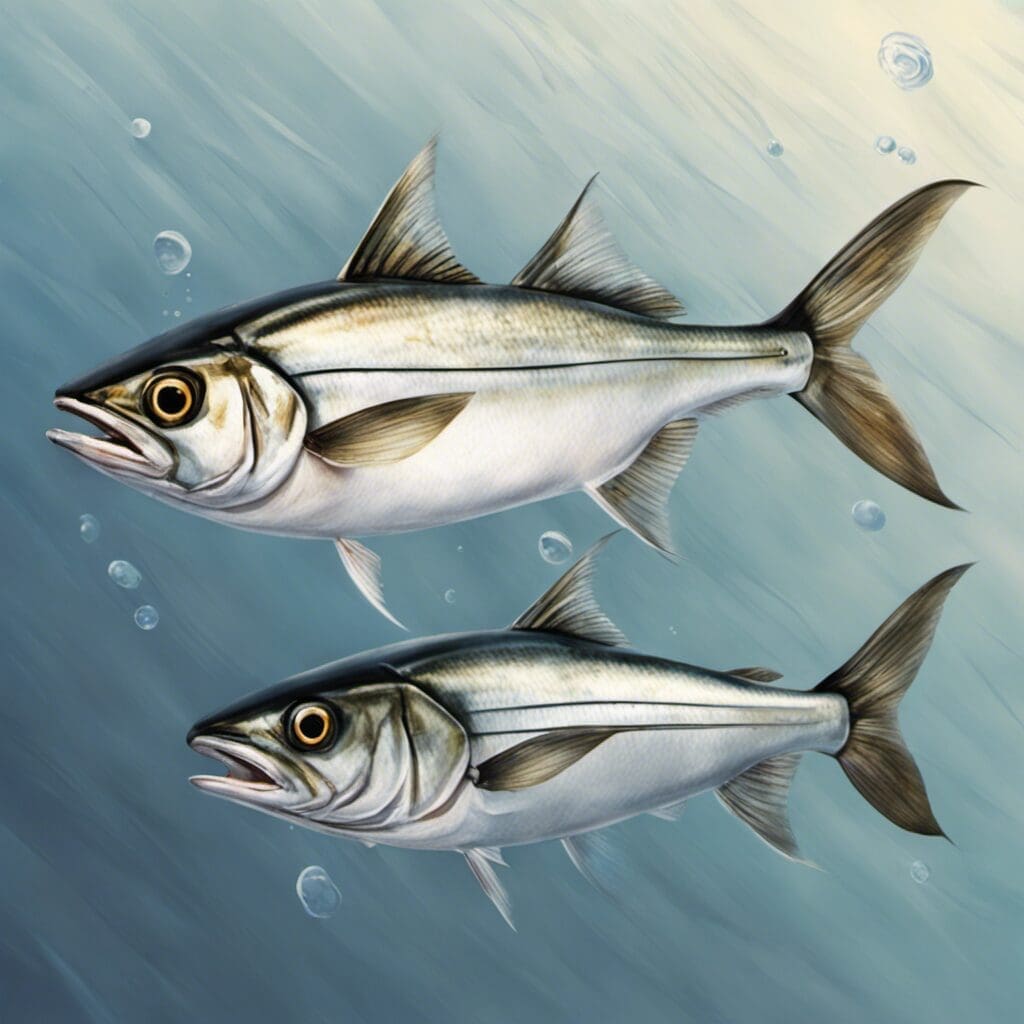Introduction
The Skipjack Shad (Alosa chrysochloris) is a species of herring located primarily in North American waters. Belonging to the Clupeidae family, this specie is known for having a glamorous silver and blue coloration and the exciting sport they offer to anglers.
Conservation Status
Currently, the Skipjack Shad is not considered to be threatened or endangered and there are no particular conservation efforts specifically targeted toward this species. However, like all species, they are impacted by habitat degradation and pollution.
Statistics
| Length (average) | Length (range) | Weight (average) | Weight (range) | Average Lifespan |
|---|---|---|---|---|
| 30-44 cm | 15-50 cm | 1-2 kg | 0.5-3 kg | 4-6 years |
Distribution
The Skipjack Shad is found throughout the Mississippi River basin, draining all of the United States east of the Rocky Mountains and also in the Gulf of Mexico. No specific migration patterns for this species have been reported.
Habitats
This particular species largely frequent turbid waters, preferring large flowing watercourses including rivers and creeks. They can also be found in brackish coastal waters. Skipjack Shad can be found in a range of depths and are known to tolerate a variety of temperature conditions, from cold to warm degrees.
When and Where to See
Anglers are most likely to encounter Skipjack Shad during the spring and fall seasons, particularly during daylight hours when they are most active.
Best Fishing Locations
No specific top fishing locations have been reported for this species, but they can be found in any rivers and streams throughout the eastern United States and along the Gulf of Mexico. As general tip, look for areas where water is flowing over obstacles like rocks or dam spillways, as these are prime feeding locations for Skipjack.
How to Catch
Skipjack Shad are aggressive biters and can be caught using a variety of methods, including fly fishing, trolling, and bottom fishing. Popular baits include small shiny lures, but they are also known to be drawn to small pieces of cut bait. The best times of day for fishing are typically early morning and late afternoon.
Identification Guide
Skipjack Shad are characterized by their silvery color, sharper snout, and a row of dark spots along their sides. They also have larger, sickle-shaped pectoral fins compared to other fish in the herring family.
Culinary Use
Skipjack Shad is not commonly consumed due to its bony texture. Nonetheless, they are sometimes smoked, pickled, or made into fish patties.
Additional Information
Skipjack Shad are highly migratory and some scientists believe that they follow the scent trail of phytoplankton, their primary food source. Their natural predators include larger fish species, birds, and mammals. They are also an important food source for human commercial and recreational fisheries.
References and Further Reading
For further information, refer to sources like Fisheries and wildlife department documents, sport fishing guides, and university research papers.

